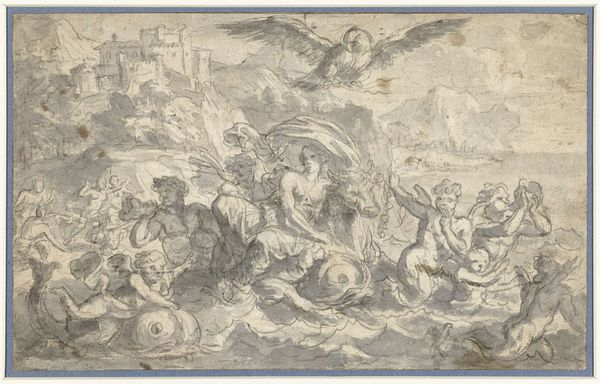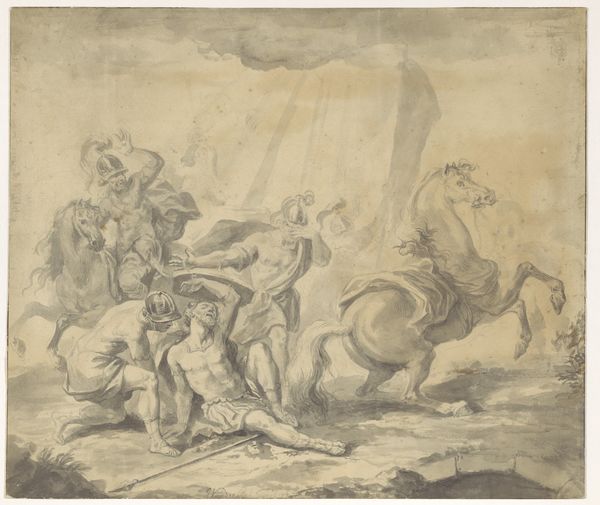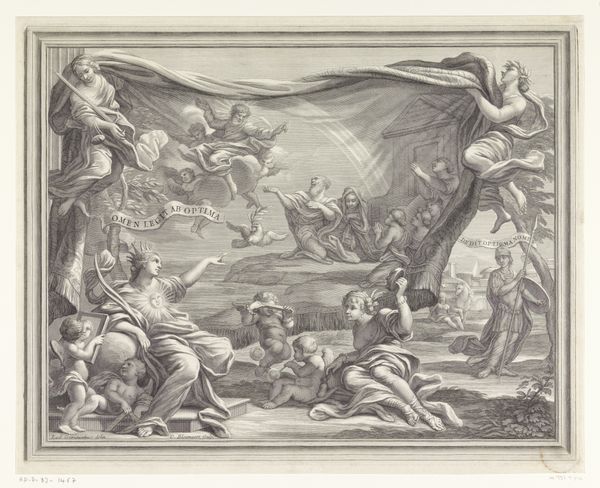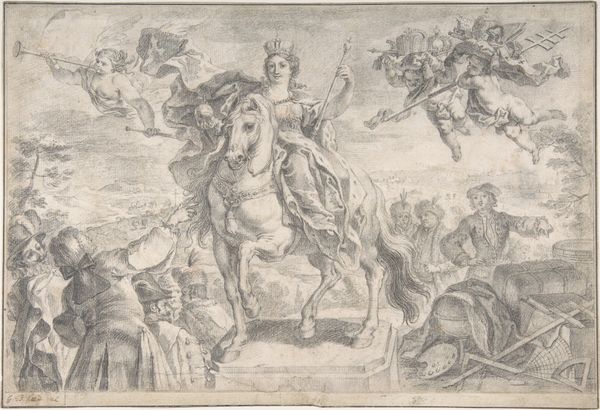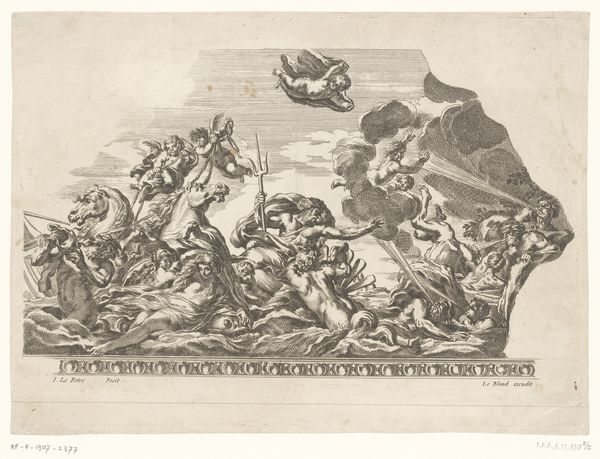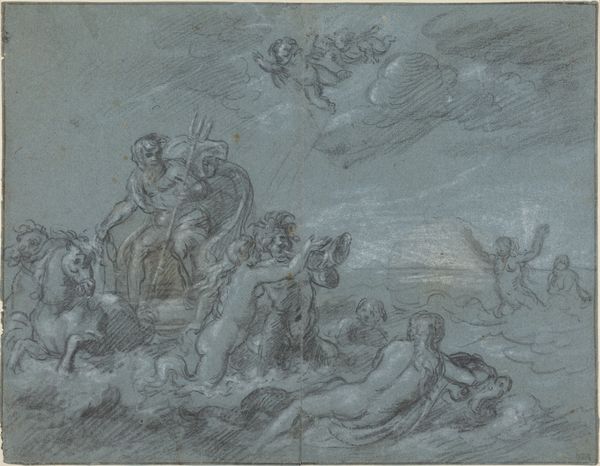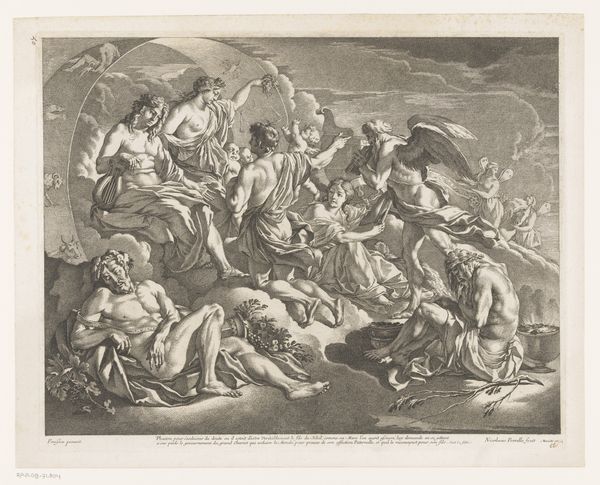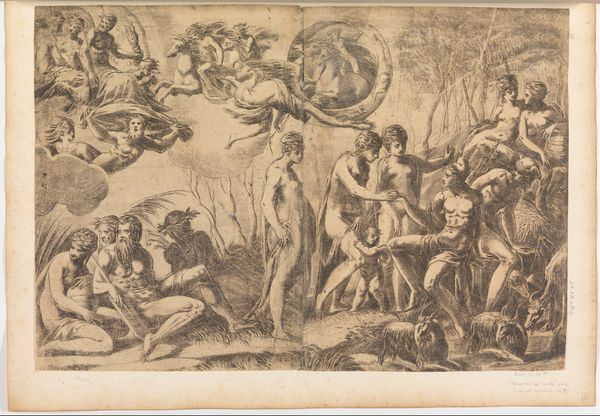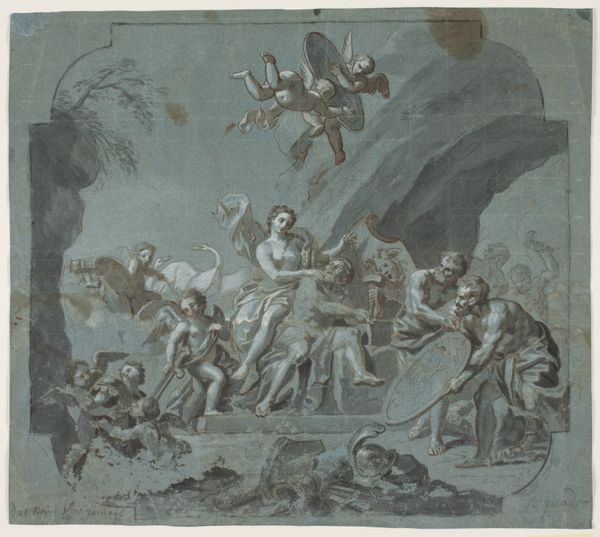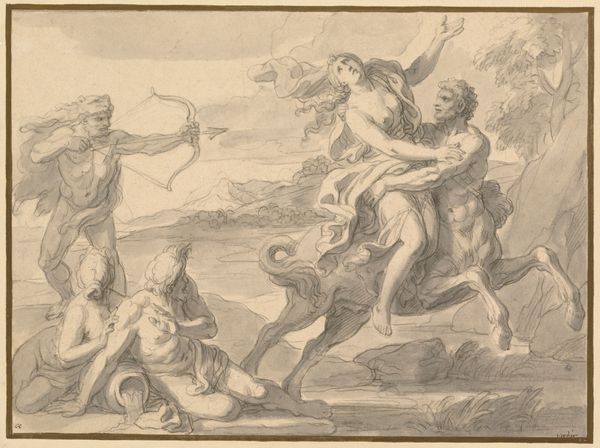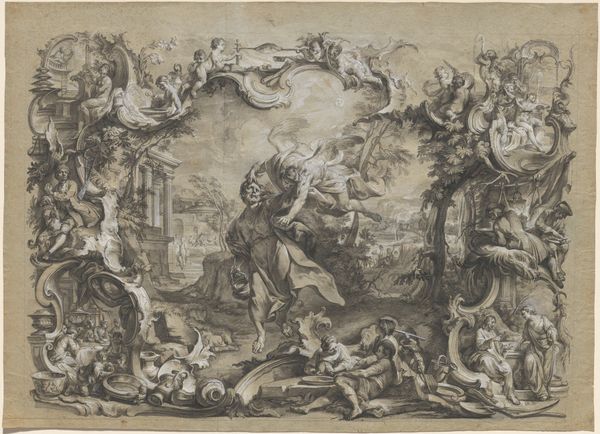
drawing, print, paper, ink, chalk, charcoal
#
drawing
#
allegory
#
baroque
#
ink painting
# print
#
charcoal drawing
#
figuration
#
paper
#
form
#
charcoal art
#
ink
#
chalk
#
line
#
charcoal
#
history-painting
#
academic-art
#
nude
Dimensions: 277 × 392 mm
Copyright: Public Domain
Curator: Right now, we're looking at François Verdier's "The Triumph of Amphitrite" housed here at The Art Institute of Chicago. Verdier, though largely forgotten today, was a major figure in late 17th and early 18th century French art. What do you think? Editor: Well, my first impression is...chaos. It feels like a whirlwind of limbs and fabric. A slightly unsettling celebration, almost frantic in its energy. Curator: It is definitely packed. Verdier’s academic and baroque sensibilities merge here. He uses charcoal, chalk, and ink on paper, giving the figures this almost ghostly, ethereal quality. It’s as though we're glimpsing a mythological event caught between worlds. Look at the composition and how the bodies are rendered; their poses borrow heavily from classical statuary. Editor: Yes! You’re right. There's something decidedly stagey about it all, isn't there? Amphitrite, the sea goddess, looks less triumphant and more like she's gritting her teeth for the photographers. The formal symmetry attempts to reign in all the energy. It is a showpiece in its way. But... I also see the raw emotion pushing through all of it, or maybe longing and fear. Curator: Exactly. Consider the history-painting aspect and how "Triumph of Amphitrite" draws upon established iconographies to create these layers of interpretation. Her status as Poseidon’s wife gives her considerable power and that is highlighted here in the composition. Though not dated specifically, one can assume that the themes present offer subtle reflections on royal power and the nature of authority during Verdier's time. The medium allows us a peek at how preliminary studies would explore thematic structure. Editor: Hmm, the "ghostly quality" you mentioned is something I can’t shake, especially with the monochrome palette. The figures, rising from this churning sea, do evoke not just power, but perhaps the darker aspects of control, of dominance over a chaotic realm. As if Verdier hinted that all power comes with a certain price. Curator: Maybe you’re right. Perhaps the artist gives a bit of himself there by hinting at life's darker undercurrents that ripple beneath idealized surfaces. Editor: A haunting image for all of its intended grandiosity. I may have to rethink some things after looking at it closer. Curator: Precisely! Great art often invites multiple viewings to appreciate different perspectives.
Comments
No comments
Be the first to comment and join the conversation on the ultimate creative platform.

